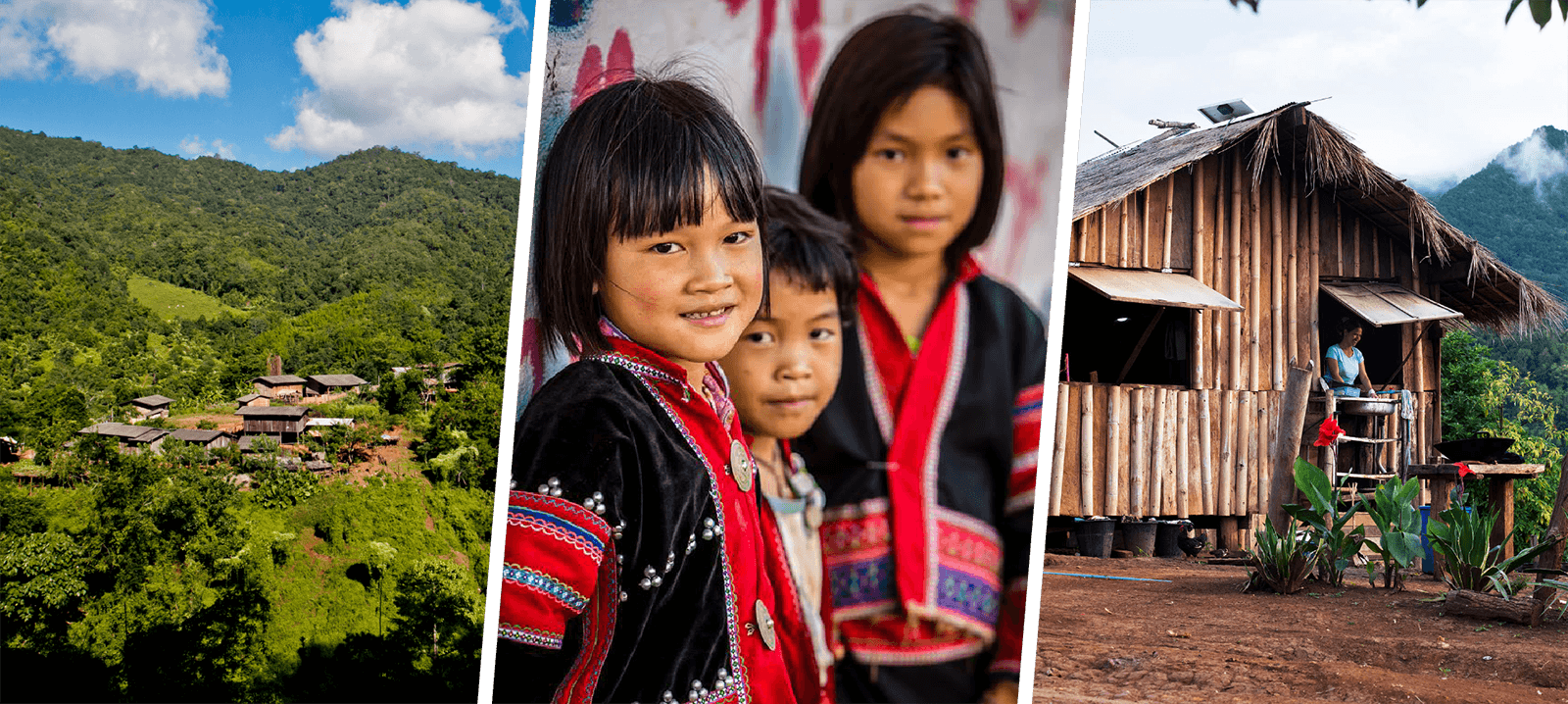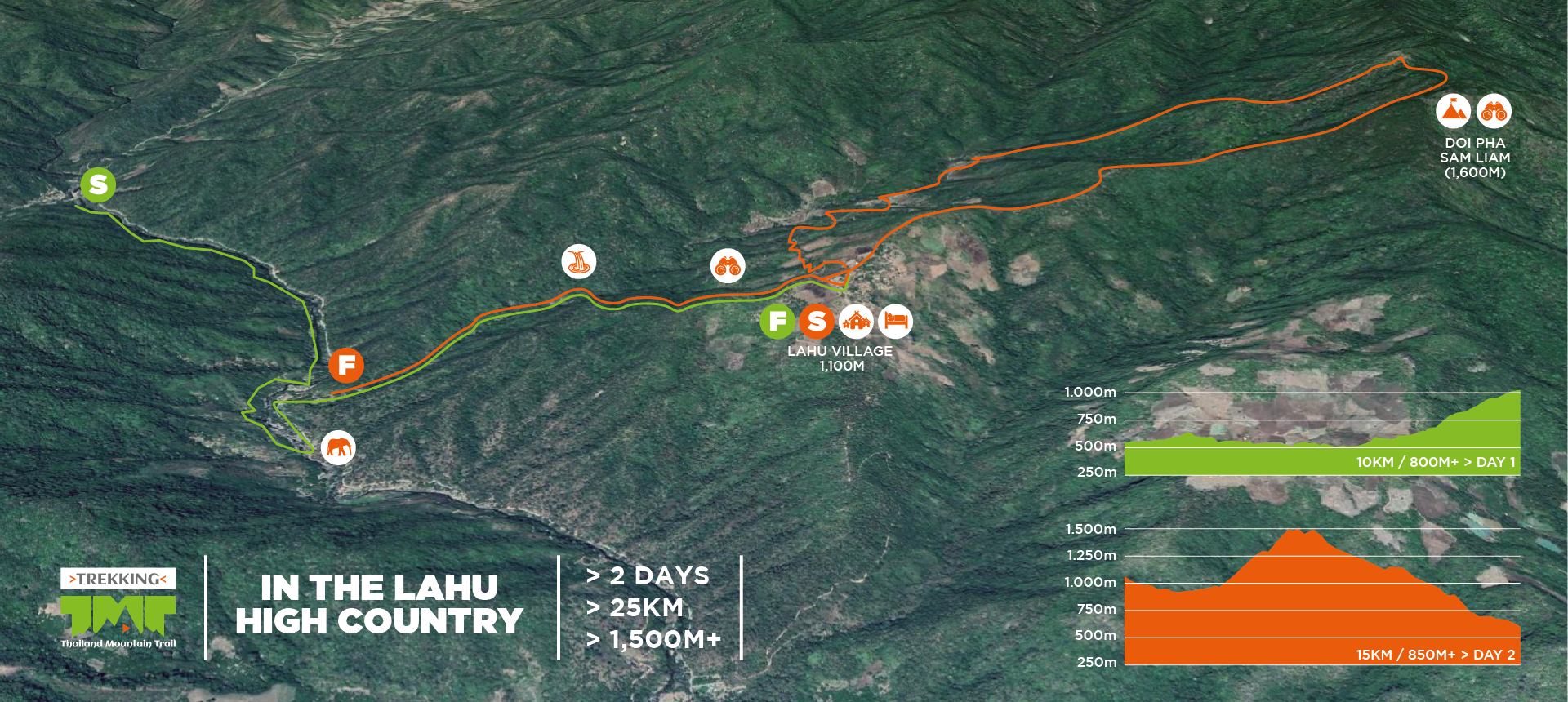In The Lahu High Country

Thailand Mountain Trail has spent several years in contact of the hill tribes to investigate the trails in the mountains of the North. In 2015 we revived many routes previously used for communicating between mountain villages and create TMT01. The 1st Thai Great Route is the longest hiking footpath of Thailand; it links Chiang Mai to Chiang Dao.
* * *
This trip will lead us on the last part of TMT01 where the route starts to enter the highest mountains. From the valley of Mae Taeng we will hike in the high country of Lahu tribes up to the bamboo village of Kup Kap and the summit of Pha Sam Liam. Here the trails are steep and challenging but the views at the top of the mountains are some of the most beautiful ones in the North.
Characteristics of the Trip
6,250 THB
All-inclusive priceDuration
![]() 2
Days
2
Days
Distance
![]() 25K
25K
Elevation Gain
![]() 1500M+
1500M+
Difficulty
![]() 2 Peaks
2 Peaks
Trip Type
![]() Trek & Discover
Trek & Discover
Finish: Mae Taman (1h30 transfer back)
90% single-track trail, 10% double-track trail
Highlights: Jungle, Rivers, Waterfall, Lahu village, Summit
1 Night in bamboo huts in a Lahu village
Duration: 5 hiking hours (day 1) / 7 hiking hours (day 2)
Including accommodation, drinks, meals, transfers, guide
See details
Available all year round
Closed: April / May
1st Day
![]() 10K
10K ![]() 700M+
700M+
We start the 1st day by following the river of Mae Taeng. It’s one of the most beautiful in the province of Chiang Mai. Settled down in the valley and surrounded by a luxuriant tropical forest, the river is known for its rapids. It’s a great place for rafting but we will go down walking in the jungle alongside the river. It’s humid and it’s wild; several times, we have to use the machete to clean the trail and move forward.
After 5 kilometers in one of the wildest jungle we know, we finally leave the main river and turn left to follow one of its streams. The trail is now wider; the pace is easier; we enjoy a comfortable hike on a flat route alongside the river. At several points we have to cross the river until we reach a 15-meter high waterfall. We will make a break there to recharge our batteries before the last difficult part of the day.
It’s a challenging ascent we must tackle with until we reach the overnight Lahu village. In 2 kilometers we will hike up 650m on a steep footpath. It’s a substantial effort that each of us will manage at one’s own pace. On arrival at the village, the wonderful and wide view over the valley of Mae Taeng is a well-deserved reward. We have time to enjoy the scenery until sunset. Soon the host family is calling us for having dinner in their traditional bamboo house.
2nd Day
![]() 15K
15K ![]() 800M+
800M+
After a refreshing night, it’s time for having breakfast on the terrace of our house. We enjoy the sunrise on the valleys and mountains around as the village is located on a ridge at 1100m with almost a 360-degree view. Warmed by the first rays of the sun, we leave this enchanting place and run a path down through fields and hills. When we reach a tiny Lahu village, we can see in the distance the summit of Doi Pha Sam Liam the objective of the day.
The biggest challenge is now waiting for us: 800m elevation gain in 2 kilometers to conquer Doi Pha Sam Liam (1650m). It’s a long climb in a mix of tropical forest and pine trees. We follow a steep ridge until the foothill of the summit then turn left for the last meters. At the top of the peak the reward is huge and eases the fatigue immediately. As far as our eyes can see, it’s a sea of green mountains all around.
We enjoy some time at the summit for eating and recharging batteries. Soon it’s time to go back home. We go down back to Kup Kap by another route through the forest. We make a last break in the village and say good bye to its people. The legs start to be tired and heavy. Fortunately the last part of the route goes down and flat until the final point. A taxi is waiting for us and will drive us back to Chiang Mai.
Accommodation
Kup Kap is a wonderful Lahu village. Located on a ridge, the view on the valleys and the other mountains is wide and impressive. We could enjoy both beautiful sunrise and sunset from the village. Even if the village might welcome some tourists sometimes, it has stayed very traditional with typical bamboo houses. We will eat and stay in huts that we have renovated with a local family we have known for a long time. It’s almost like home here!






